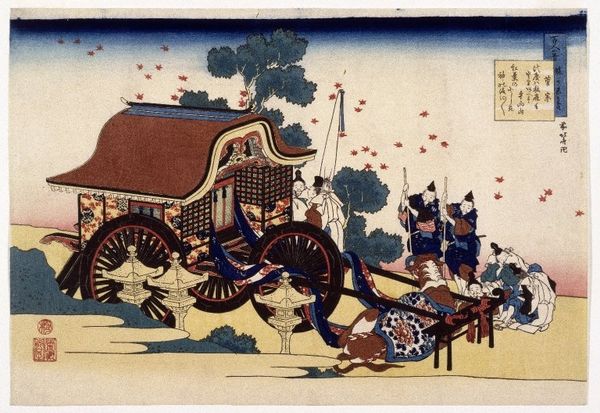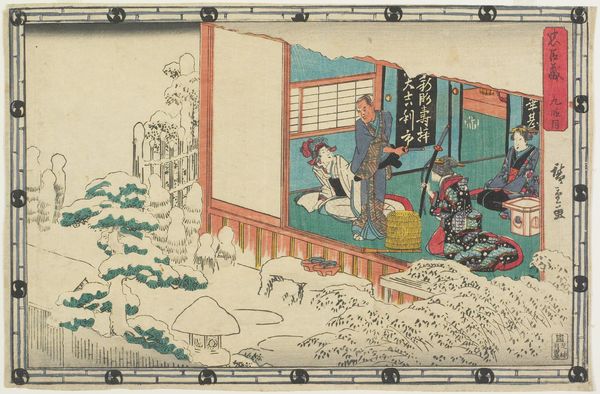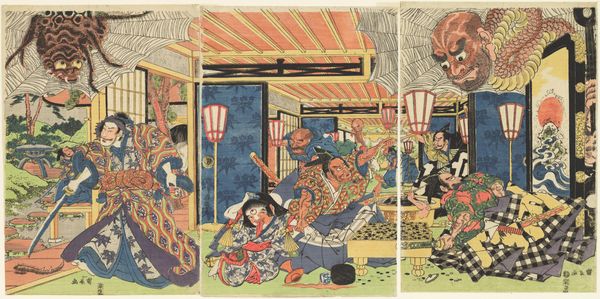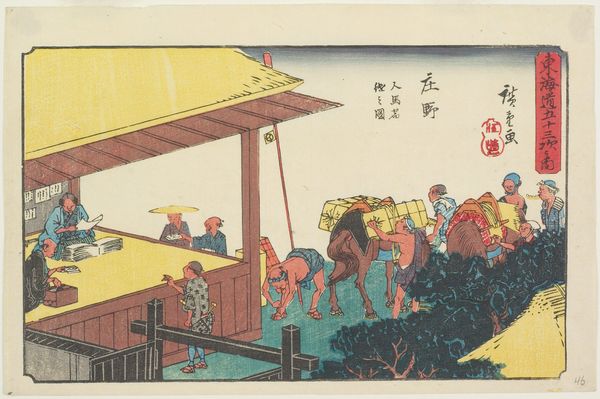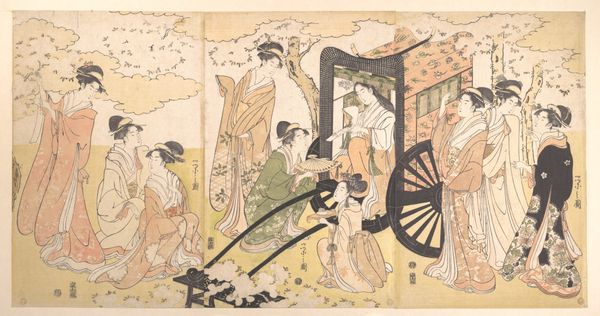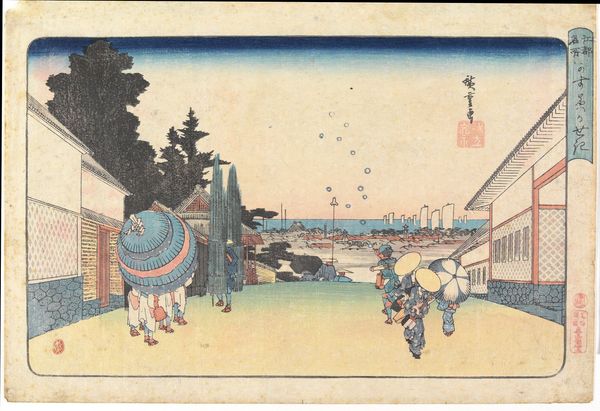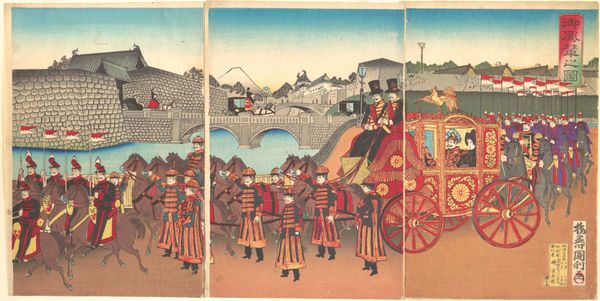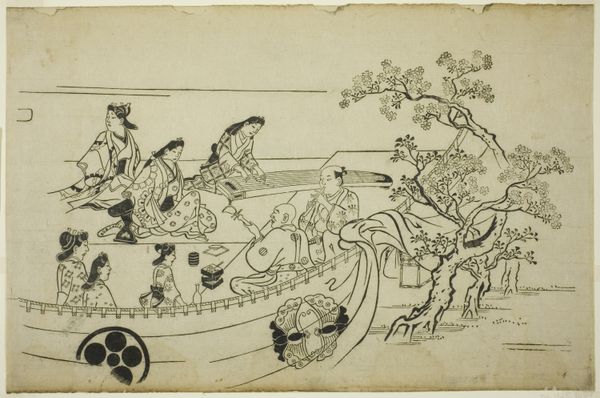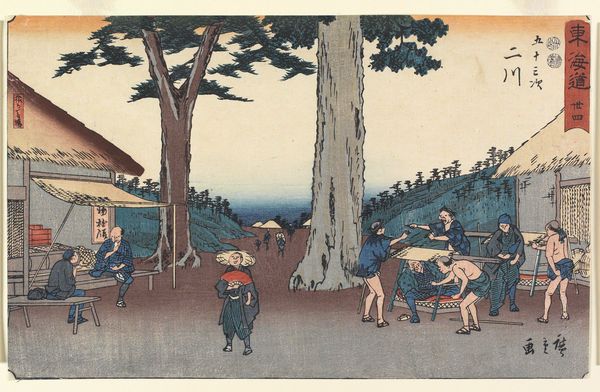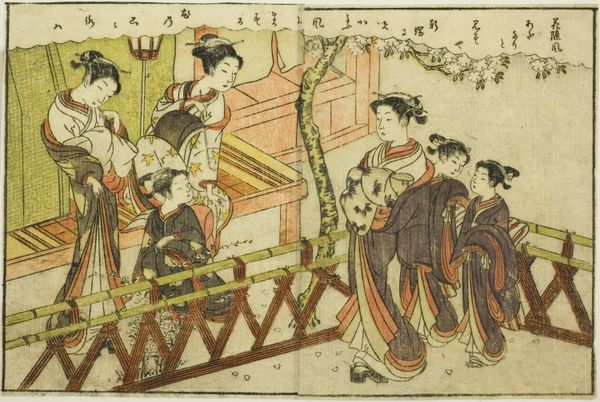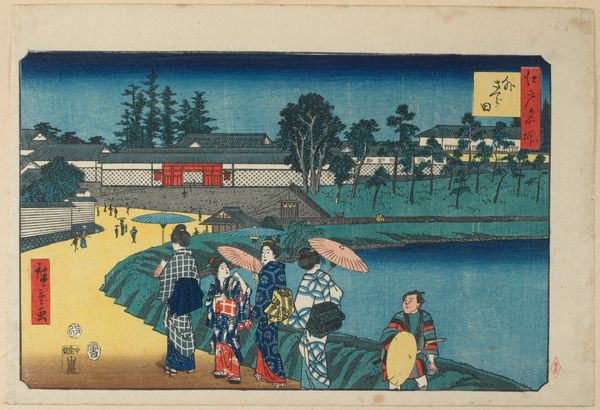
print, ink, woodblock-print
# print
#
asian-art
#
ukiyo-e
#
ink
#
woodblock-print
Dimensions: 9 3/4 × 14 3/8 in. (24.8 × 36.5 cm) (image, horizontal ōban)
Copyright: Public Domain
"Poem by Kanke" was created by Katsushika Hokusai, during the Edo period, using woodblock printing techniques. This print is part of a series called “One Hundred Poems Explained by the Nurse,” which draws on a famous anthology of Japanese poetry and illustrates each poem with a corresponding image. Here, Hokusai depicts a scene reflecting themes of power, gender, and societal expectations of the era. A high-ranking woman is carried in a palanquin, emphasizing the privilege and restrictions placed upon women of noble status. The poem, inscribed on the upper right, speaks to the fleeting nature of beauty and life, a common theme in Japanese art influenced by Buddhist teachings. In his series, Hokusai does not simply illustrate each poem but uses the images to reinterpret it in a different light. This print makes us think about how art shapes our understanding of history. It speaks to our complex emotional relationship with the past, where beauty and melancholy intertwine.
Comments
minneapolisinstituteofart almost 2 years ago
⋮
In this picture Hokusai creatively conflated two events associated with the great statesman and poet Sugawara Michizane (844-903), also known as Kan Ke. Once, when traveling in autumn with emperor Uda they stopped at a Shinto shrine renowned for its maple trees. Etiquette prevented Michizane from making an offering at the same time as the emperor, so he composed the poem recorded here in the square box in the upper left corner of the print: At the present time,since no offering could I bringBehold Mt Tamuke-a brocade of red leavesfor the pleasure of the gods. Later in life, Michizane was slandered at court and sent into exile where he died. His loyality to the emperor, however, never wavered. According to legend, the faithful ox that pulled his funeral cart was overcome with sadness, stopped en route, and refused to go on. The site became Michizane's final resting-place. Here, Hokusai's image is ambiguous, referring both to Michizane's joyful excursion with the emperor and to his demise.
Join the conversation
Join millions of artists and users on Artera today and experience the ultimate creative platform.
